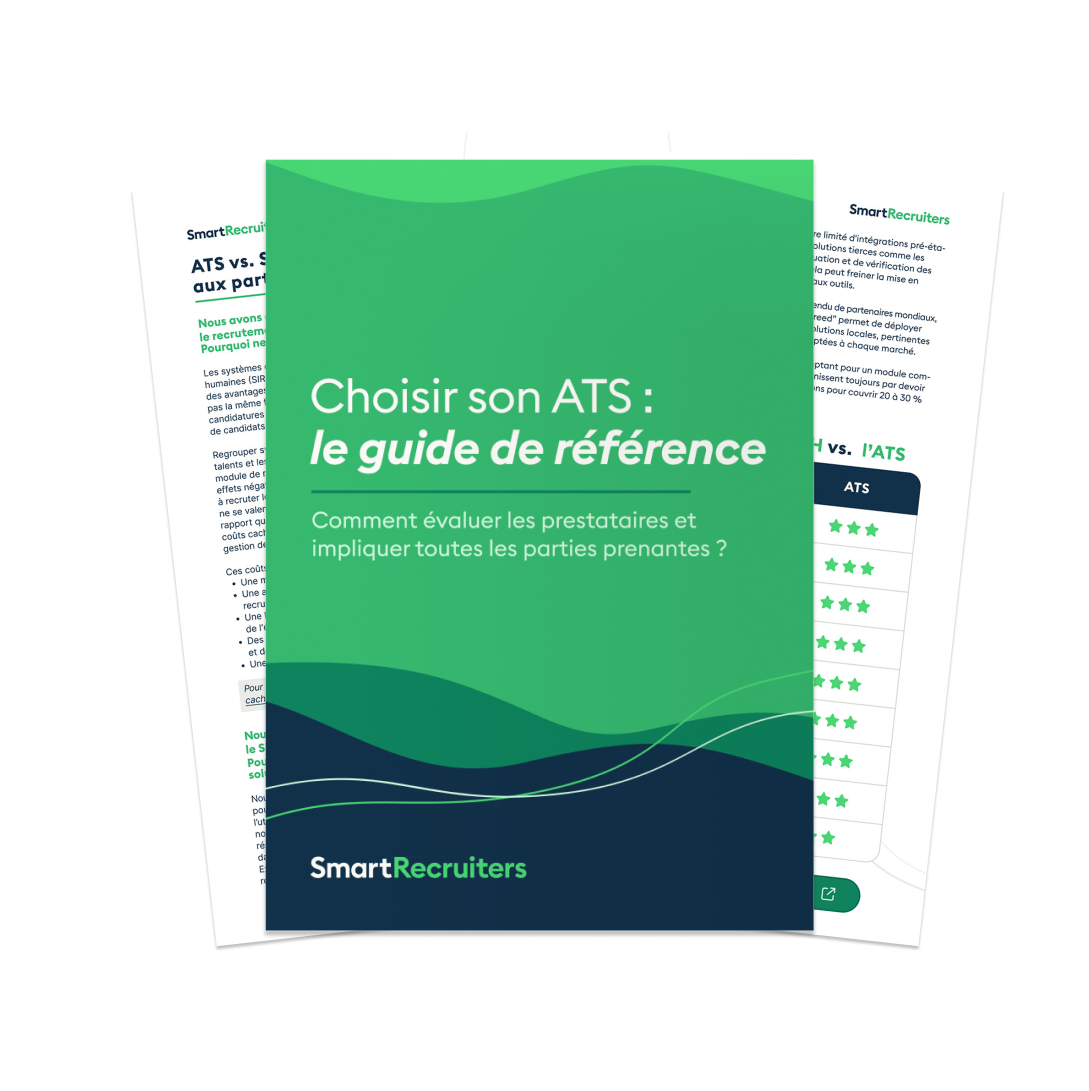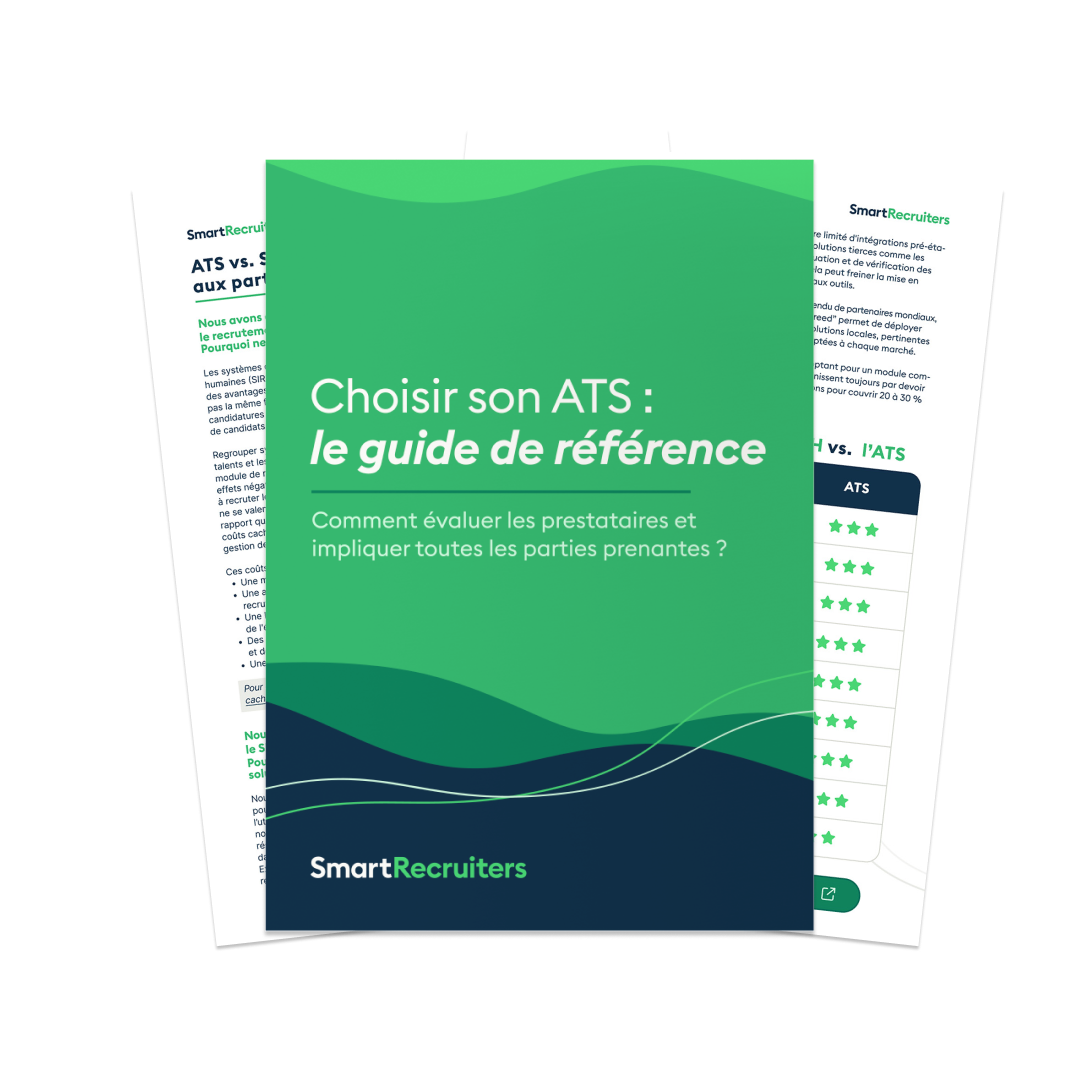Vous hésitez entre un module SIRH et un ATS dédié ?
Votre équipe IT ou SIRH pousse pour un module de recrutement intégré, mais vous êtes convaincu qu’une solution ATS spécialisée est le meilleur choix pour vos recrutements. Comment défendre votre point de vue face aux partisans du SIRH ?
Nous avons créé une fiche pratique pour vous donner des arguments clés :
- Les réponses aux 4 questions les plus fréquentes des équipes SIRH
- Une checklist des fonctionnalités essentielles à analyser
Téléchargez notre fiche pratique et préparez-vous à convaincre vos équipes techniques avec des arguments concrets.












